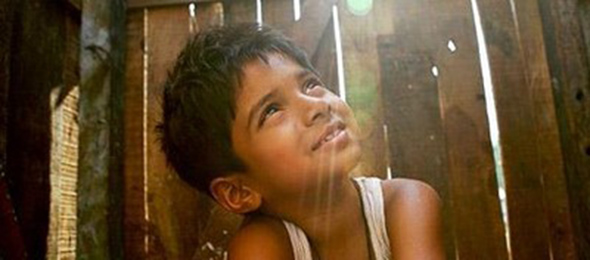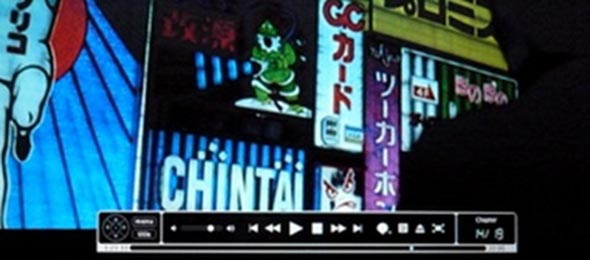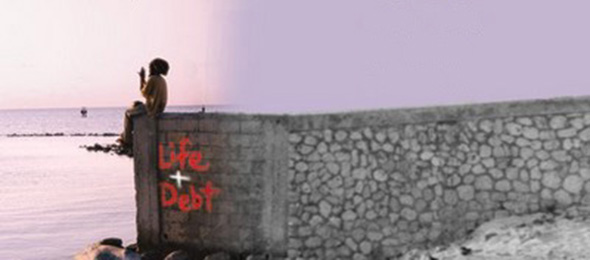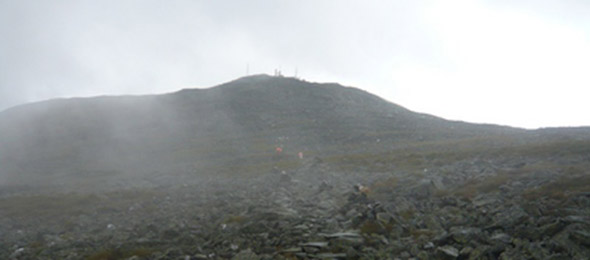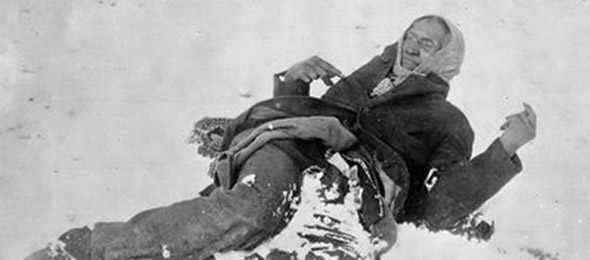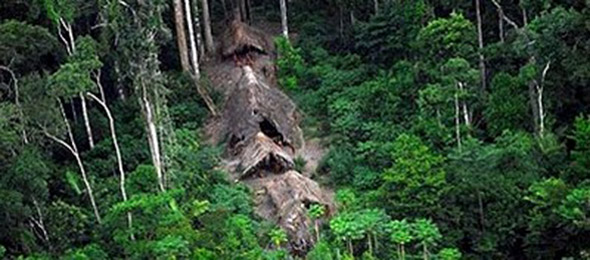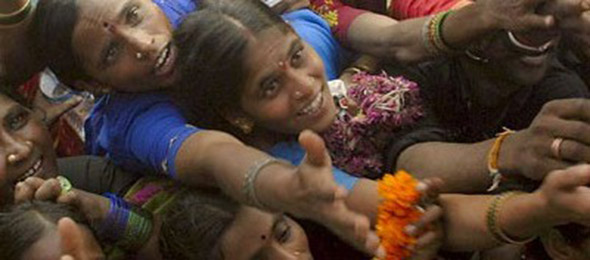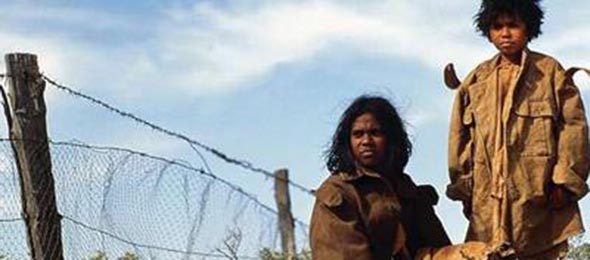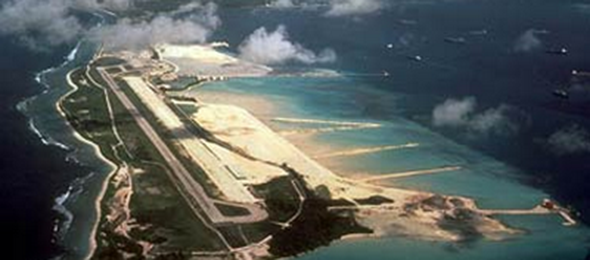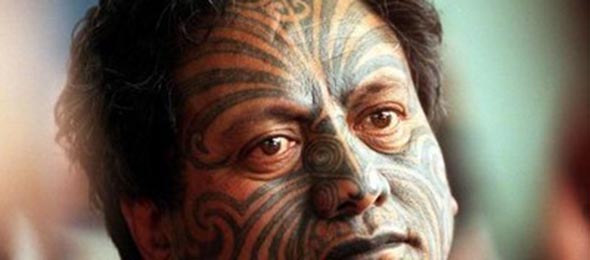The Slumdog Reality Tour
Reading the Telegraph’s story, Slumdog Millionaire: Mumbai’s real slumdogs, I’m thinking no, there can’t really be tours of the slums of Mumbai. Why?
Reality Tours believes, “that Dharavi, the biggest slum in Asia, is one of the most interesting places to see in Mumbai.” The tour offers to, “break down the negative image of Dharavi (and India’s slums) and its residents,” and to “bring people of different countries, races, religions and social classes together to increase understanding and empathy.” Hmm. The tour is ten bucks per person for the “short tour” or twenty for the “long tour” or you can opt for the “private long tour” for $80 bucks if you’d rather not have the company.
So there’s two sides to this (at least). Certainly the issues we never see never get addressed, so perhaps some good could come of it. And then, the fact that we’re so disconnected from one another that we need to take a tour to shock us into action is probably just the state of the state currently. Perhaps the US election will bear out that we hit compassion’s low point with the Bush Administration and my HOPE is that a new cloud-clearing era has arrived. Hope.
I don’t think the tour should be on the itinerary though. Volunteering seems a step in the right direction. I know there are a host of issues surrounding even that: “Gap-year ‘voluntourists’ told not to bother” outlines many of the hurdles there. But still, helping has to be better than watching.
I support Kiva where I can help people to help themselves with loans (micro) that have an amazing track record for repayment, and I choose the person with whom I want to ‘invest”. For the cost of a slum tour I have the chance instead to help someone start a sustainable business.
Last Life in the Universe
I go off on geographical tangents. With music I’ve been transported to Iceland with Sigur Ros, authors from South America like Jorge Luis Borges, and lately with film it’s been Asia.
It’s been a bit hit and miss, Tokyo Drifter, in Black and White was a little dated, and Hiroshi Teshigahara’s crime drama Pitfall was cool, in a way. But the gems are Thai director Pen Ek’s “Last Life in the Universe” and Wong Kar-wai’s film “In the Mood for Love.”
And beyond film, Asia has been pulling the center of the economic universe to the east, the Far East. And with that comes all else — culture, politics, and the ability to impose a world view different from one we know here in the States. The Economist dedicated the December 13th issue to the region and the New York Times served up a sober assessment of the state of the States, China and the United States the day after Christmas (follow the link).
I’m hoping Art serves as a basis for our future relationship with Asia as Commerce looks shaky.
Life & Debt; Paradise Revisited…
Admittedly, I am late to this party. Life & Debt came out a while ago, but I just Netflixed it, so I got to see the Stephanie Black directed feature late. Better than never.
The film tells the story of the island nation of Jamaica’s interaction with the International Monetary Fund. And the effects. I polled a friend and Jamaican native in an informal fact-check and more-or-less got the idea she didn’t agree with the film or the presentation. But Jamaica is a pretty partisan place, and the facts as laid out in the film are sad and the presentation pretty compelling. Belinda Becker, who I know as a New York trend-maker, narrates part of the film. Overall the film is riveting because some of the story-lines, the effects of the IMF relationship are so monumentally disastrous and often inhumane, that you’d think it would sit somewhere on the front page of the New York Times. Here is what the New York Times had to say recently about the film:
“The term ”globalization” is so tinged with rosy one-world optimism that it’s easy to assume the essential benignity of an economic philosophy whose name vaguely connotes unity, equality and freedom. But as Stephanie Black’s powerful documentary ”Life and Debt” illustrates with an impressive (and depressing) acuity, globalization can have a devastating impact on third world countries. The movie offers the clearest analysis of globalization and its negative effects that I’ve ever seen on a movie or television screen.”
Whoa. Watch it.
Favorite Mag & Bhopal
For several reasons, mostly the armchair adventure aspect, my current favorite magazine is Geographical published by the Royal Geographical Society in the UK. It’s what Outside magazine would be if it didnt have to pander to advertisers.
I was reading my favorite magazine and out dropped a piece of direct marketing, but not for sunglasses or a new Toyota Landcruiser, armchair favorites, but for Bhopal. I don’t know. I thought the whole thing had been solved, but really it was simply off my radar.
It’s not. The stories are heartbreaking. And though Union Carbide was responsible for the clean-up and somehow transfered that responsibility, the end result is that the abandoned plant is sitting there like Chernobyl. Reeking and killing. In any event the magazine Georgraphical is well worth reading, the link to Bhopal.org takes you to an organization that is helping, and I think help, from Americans, makes sense. We need to check our capitalist ambassadors from time to time as earnings aren’t all that matter.
Mountain (Washington)
We had talked about hiking (climbing?) New Hampshire’s Mt. Washington for years. Why so long? No good answer. But, in my experience, any trip that requires aligning more than one schedule is at risk for serious postponement. Talking finally turned to walking this past weekend. What is curious was the difficulty in getting info for what is a pretty popular trip in the Northeast that many, many people have tackled.
Here in New York City, neither Paragon Sports or EMS (Eastern Mountain Sports) had a map. Basic. Tent and Trails had one. Literally one. But it was of the entire Presidential range. I’d get one when I got there.
Best site for me was this Earthlink page. The other Google top-ranked pages are pretty good. The takeaway is basically that the weather can be seriously dangerous above the tree-line, and you should be in shape.
The where to stay, what to bring, which trail is best is somewhat of a Rubik’s Cube as each ties into the other. If you’re up for a 7 hour-ish drive from NYC, don’t let the weather warnings deter you (at least in August and assuming you’ve got some sense — the days before we got there the temperatures at the summit were in the 30’s — add wind and rain and you get the picture).
Bring: rain gear, warm clothes, some way to keep warm clothes dry while you’re not wearing them, and other requisite hiking materials (food, water, etc). That’s for summer, any other season (especially winter) gear up and maybe get a guide from EMS if you don’t have serious winter camping skills (can you build an igloo?).
Enjoy.
Paradise
I don’t know why Fiji Times and Pacific Magazine sit in my “weekly” favorites, but they do. Fiji found its way to my favorites mostly from an environmental standpoint but once there the on-going story of the indigenous people and the cultural impact of colonialism became just as compelling. Those beautiful islands we see in Pacific postcards are largely stuck in a post-colonial netherworld.
And as I write this post, “Mutiny on the Bounty” (1935) rolls by on my TV, in black and white with the sound turned down. The “natives” don’t look very native. And the movie doesn’t delve into the fact that “First Contact” was a disaster for indigenous peoples.
But, that said, the “Mutiny” really did put Captain Bligh in a 23 foot boat that he would sail, with 18 aboard, over 3,000 miles. Armed with a sextant and aboard an open boat there are probably just a few sailors who could do what he did even today. C’mon no chart, no compass (no GPS). Very few.
A further aside is the story of many of the mutineers (from the year 1789 we’re talking) who made their way to Pitcairn Island where their descendants still live — some 47 or so. In 2004 there was trial of many of these wayward souls for sexually abusing their own inbred young people – read the Wiki. So the long arm of British justice still reached these remote castaways and stirred the very old pot. It’s a very strange story, one that Vanity Fair featured as well. Strange that the ghosts of that day and those people are very real and are still living off-balance lives in that faraway place so long after the original crime.
Can’t mention the Pacific without Captain Cook’s voyage and that is well documented — read Blue Latitudes.
But more so read Fiji Times. It’s curious to see such an ongoing upheaval politically, socially and now environmentally in a place we normally think of as Paradise. Maybe Paradise really is just a state of being, temporary and not any one place after all.
Nuclear Reactors +1000
From the UK, “Gordon Brown has signalled he wants Britain to play a major role in the race to build an extra 1,000 nuclear power stations across the world.” It was just a matter of time with oil wedged in over $120 per barrel.
The problem has always been more about the waste than the power. It’s been pretty safe, save for Chernobyl and such. But, with electric automobiles nearing reality the load on power plants would be unbearable with the grid in its current state.
And if not nuclear get ready to hear an awful lot about CleanTech, a word lots of VC’s have seen plenty of, but there is still no “Google” emerging. But add it to your Google Alerts and take a look at what’s bubbling up. Lots.
But nuclear waste? More questions and same questions with few answers.
Wounded Knee Redux
Pictured, Miniconjou chief Bigfoot lies dead in the snow after massacre at Wounded Knee. So we’re giving some land back to the Sioux. I’m certain the NY Times will get around to the story, but meanwhile check Britain’s Independent, “Nearly 120 years after the last massacre of Native Americans by the United States cavalry at Wounded Knee, some of the lands confiscated from their descendants are to be returned to the Oglala Sioux.”
And a Wiki-history lesson: “The Wounded Knee Massacre, also known as The Battle at Wounded Knee Creek, was the last major armed conflict between the Lakota Sioux and the United States, subsequently described as a “massacre” by General Nelson A. Miles in a letter to the Commissioner of Indian Affairs…” By the time it was over, more than 300 men, women and children of the Lakota Sioux lay dead. Twenty-five troopers also died during the massacre, some believed to have been the victims of “friendly fire” as the shooting took place at point blank range in chaotic conditions.
If you’re up for it read the book, there are no celebrities and it will make you cry: Bury My Heart at Wounded Knee.
oh Africa…
The stories out of Africa, the stories we see in America, are rarely bright. And neither is this one in The Independent: Murdered by Mugabe’s mob, “…His eyes had been gouged out and his tongue cut off. The 30-year-old was so badly beaten his father had trouble identifying him…” The story of one man trying to make a difference, risking his life, and losing it. No, not lost really, taken, and in a horrible way that screams for justice as some insignificant salve for a wound that can’t be repaired. Mugabe freed Zimbabwe from it’s colonial exploiters, and has plunged an entire nation into a nightmare. Tonderai Ndira paid dearly.
The Uncontacted…contacted
One of the last remaining tribes in the world uncontacted by “us” has been….well contacted. At least photographed. This in Brazil. And as much as it seems novel that these people exist, along with the general romantic idea that pre-contact is somehow better, more honest and closer to the source, it is also cruel joke to not simply inform them that there have been certain advances over the past couple thousand years.
Sure many advances, television for instance, have down-sides, like reality programming, which outweigh the benefit. But, there are some, medicine, for example that are very helpful. Life-saving. So will Brazil introduce these folks to health care or live and let live? Likely the latter.
I’m sure this path is informative on some level for science, but it’s odd to not tell another human being that they could forgo significant pain and suffering even if at some cost to living in harmony with nature. So maybe put it to them? That’s what I’d do.
The whole episode brings up a favorite book, “Last Places,” by Lawrence Millman. Funny in an outdoorsy kind of way.
4GW
Want to scare yourself? Google 4GW. Or read blogs like that of the former special operations pilot in the USAFJohn Robb. I just read The Road, a book by the author of “No Country for Old Men,” Cormac McCarthy. Bleak. The book is about an ash-filled world (thus the image from the Philippines by photographer Alberto Garcia). The book and blogs can paint a scary picture, but the brightest take on such a dark subject could be the effort to get the environment in shape and put some of conflicts to rest. If not, John Robb has a vision of the future along with a plan and it does not look like fun. Look for Charlize Theron to star in the now-filming version of “The Road” though I don’t see her character in the book…errr…not to give away the plot…
Not a Pretty Picture
The New York Times tells us that the food shortage or the price of food is beginning to cause havoc around the world. The article offers, “Haiti’s hunger, that burn in the belly that so many here feel, has become fiercer than ever in recent days as global food prices spiral out of reach, spiking as much as 45 percent since the end of 2006 and turning Haitian staples like beans, corn and rice into closely guarded treasures…”
I don’t know why The New York Times uses code words in their articles. In this story titled “Across Globe, Empty Bellies Bring Rising Anger,” they choose the word “bellies.” A word hardly used here in the States except when dicussing babies. Its use here is condescending.
This choice of words is similar to the The New York Times calling US people “poor” and some foreigners “peasants,” or their atrributing Egypt to the MidEast as opposed to Africa. All a form of subtle revision or their peculiar lens on the world of brown people.
Choice of words aside, food is a growing problem for many people around the world. Excellent organization that can help is Care.
The Fierce Urgency of Now…
The fierce urgency of now collides with the fear of the unknown with Barack Obama’s campaign to become the president of the United States. Obama borrowed Dr. King’s thunder so it helps to revisit what King said in 1963.
Midway through King’s legendary speech that summer in Washington DC he offers, “We have also come to this hallowed spot to remind America of the fierce urgency of now. This is no time to engage in the luxury of cooling off or to take the tranquilizing drug of gradualism. Now is the time to make real the promises of democracy. Now is the time to rise from the dark and desolate valley of segregation to the sunlit path of racial justice. Now is the time to lift our nation from the quick sands of racial injustice to the solid rock of brotherhood. Now is the time to make justice a reality for all of God’s children…It would be fatal for the nation to overlook the urgency of the moment…
So that urgency while meant at the time for the deep racial divisions in this country can be applied to The War, the economy, the environment and the sense that somehow, as a Nation we are not what we should be nor are we heading in a direction to correct that. Barack signifies that we are radically off course. And many of us believe that. So if a solution or an answer appears in an unexpected form, one which requires trust and has some risk, well at this stage it’s worth that risk. Barack Obama has my vote. Not so much knowing that he can deliver on all those promises, but hoping.
Coming Correct, Almost
Watching a movie like Rabbit Proof Fence (image above from the film) one could get the idea that the issues of indigenous peoples are more history than current news. But Australia manages to confound that idea (though they have plenty of company). A recent article article in today’s Guardian, Australia’s ‘stolen’ children get apology but no cash should keep us informed that while these problems may have been solved in some senses the repercussions remain as does the legacy of injustice. There is an on-line apology for that injustice which has collected some 24,000 that looks woefully inadequate.
Diego Garcia: Terror Island
Some islands are better than others, and some are just bad. Diego Garcia was once an uninhabited atoll sitting in the Indian Ocean about a 1000 miles from anywhere else. Effectively paradise.
Sometime in the 1700’s the French decided to ‘populate’ the island with plantations and the requisite slave labor needed for the operation of these businesses. That’s bad, but no as bad as it gets.
The island was forcibly depopulated beginning in 1971 when the United States struck a deal with the British for a US military base that can and has been used as a base for B-52’s, B-1’s and other aircraft needed for US efforts in far-flung parts of the globe that might otherwise be inconveniently out of the reach of our ordinance.
If all that is not bad enough, The Guardian recently adds that Diego Garcia may also house a secret CIA jail used to interrogate terror suspects. An interesting aspect of all this, from my point of view, is how these stories fail to garner any ink back here at the source, in the United States.
The Maori Revolution
Recent fascination with all things South of the Equator continues. The BBC reports that New Zealand activist Tame Iti pictured above has been arrested for planning what would amount to revolutionary or terrorist activities (depending on one’s perspective). Iti has been an activist for indigenous rights as well as a business person, family man and entertainer. 17 others were arrested and it seems there are two very different versions of what his group was doing or about to do; ranging from the authorities view that they intervened and disrupted a guerrilla-style training camp to the more benign view that the group was more comical than dangerous. In any event, Iti had been under surveillance for 18 months, and as a vocal supporter of Maori sovereignty the event sends a message that Big Brother, as one might suspect, is certainly watching.
